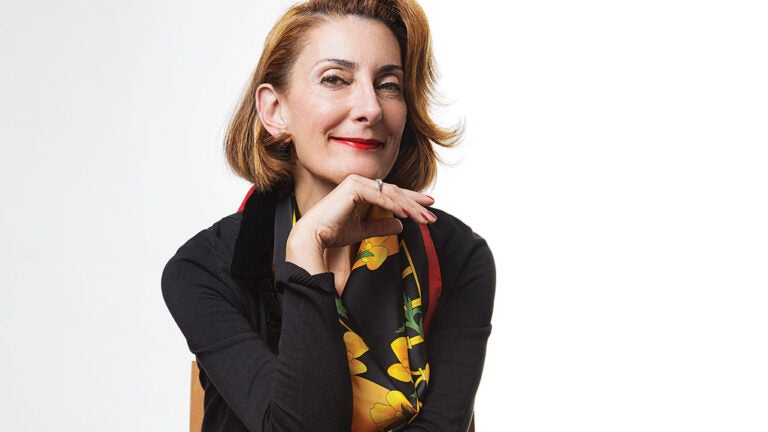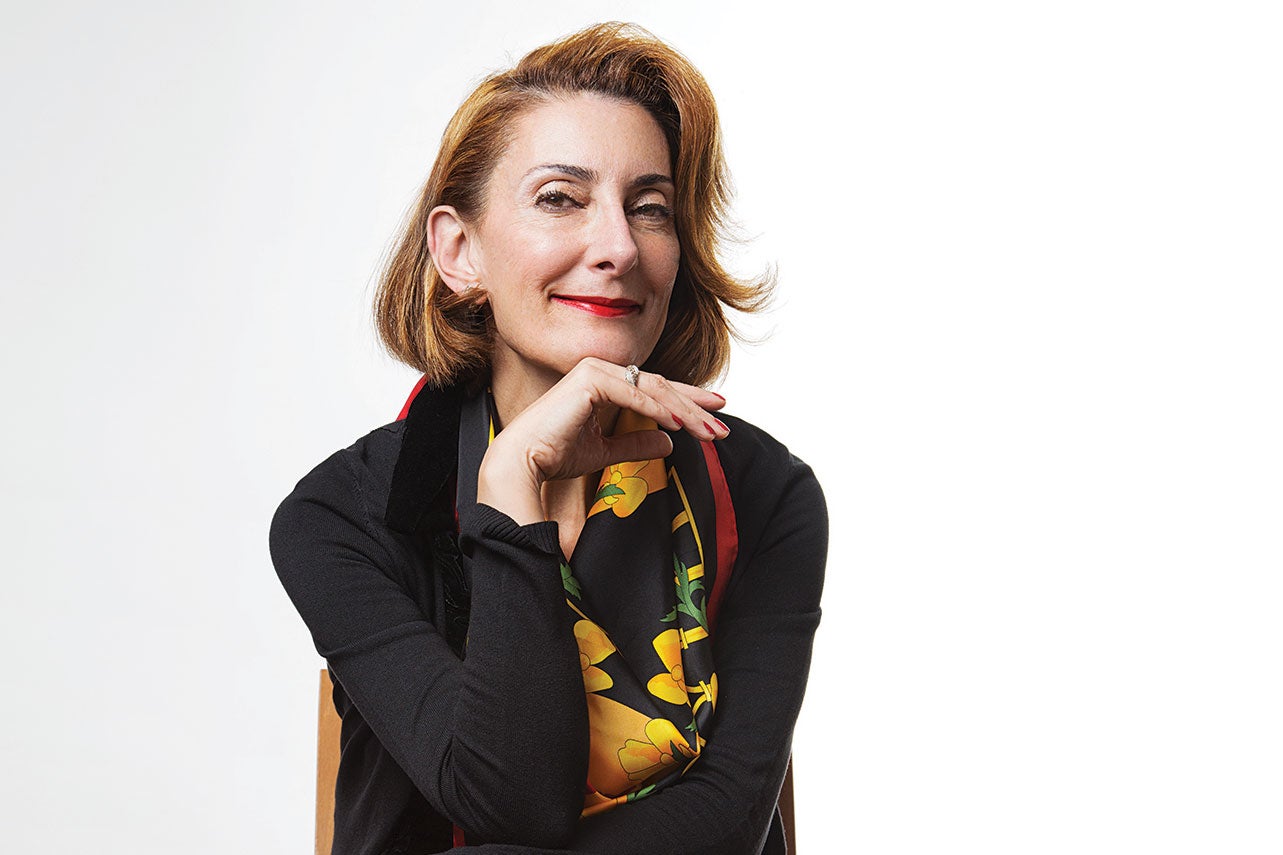
Mahvash Navazesh, associate dean in academic affairs and student life at USC (Photo/Nate Jensen)
A Trojan who moved from the city of red roses to the City of Angels
Almost 40 years after coming to the U.S. for a yearlong residency program, Mahvash Navazesh is still here, helping to lead one of the nation’s top dental schools

Being the first-generation college student and the only female in your family to study in a foreign country can be intimidating in itself.
But doing so when your country is in a revolution and your student visa’s on the line takes resolve. That’s what Associate Dean in Academic Affairs and Student Life Mahvash Navazesh had to have in the late ’70s during her general practice residency at the University of Pennsylvania.
Navazesh will be honored on May 21 at the Friends of Dentistry Gala, where she, alongside Roseann Mulligan, associate dean of Community Health Programs and Hospital Affairs, will receive Excellence in Education Awards.
Top of her class
Navazesh attended Pahlavi University in Shiraz, Iran, a university that ws privately funded by the Iranian Shah Mohammad Reza Pahlavi, a Western-influenced leader.
“I remember the Shah talking to me once during a visit to the school,” Navazesh said. “I was the tallest in my class so I could not blend in, and when he asked me questions, I was so nervous.”
During her time in dental school, she recalls visits by the Shah and his wife, Farah, an advocate for promoting women toward professional endeavors.
Navazesh graduated at the top of her class and was valedictorian for the dental medicine Class of 1977. She was also one of six graduates from her class selected to travel to the United States to complete a residency.
“It was never my intention to finish first or to be at the top of my class,” she said. “I was mainly interested in being selected to fulfill my residency at the University of Pennsylvania, and I did what I had to do to be selected.”
Navazesh left her family and friends to begin her residency in August 1977.
“I had never left my family before; I had never even went on a trip within the country without them, so this decision to travel alone as a woman to the U.S. was a very big deal,” she said.
After completing her general practice residency, Navazesh began an oral medicine residency, hoping to return to her Iranian alma mater to create an oral medicine residency program.
But, in 1979, war broke out in Iran, and her plans changed indefinitely.
“The Iranian Revolution started and, as a result, my scholarship that was funded by the Iranian government was discontinued, and I was subject to deportation,” she said. “When I left home, I thought I would be gone for 12 months. I never thought almost 40 years later I would still be in this country.”
It was then that Navazesh decided it was critical that she gain the education and credentials she needed to practice in the United States. She took her boards at Penn and received her DMD degree in 1983.
The only woman in the room
As Navazesh’s career started to gain traction, she began to realize she was often times one of the few — if not only — females in the room.
“When I was in school in Iran, I never thought being a woman in my profession was unique,” she explained. “It was when I was in the U.S. and my career was taking off that I would get comments like, ‘Do you have hands that are strong like a man to do what you’re doing?’”
Navazesh said she would just laugh it off and continue working hard doing what she wanted to do most: help others.
In 1986, Navazesh’s family — minus her father, who had passed away — moved from Iran to Southern California. She, too, relocated to be close to them and began working as a volunteer faculty member at the Herman Ostrow School of Dentistry at USC.
Revolutionary ideas
It was in the halls of USC’s dental school that Navazesh met her mentor, the late Distinguished Professor Emeritus Clifton Dummett, who encouraged her to pursue her then-revolutionary ideas, which involved looking at the impact of oral health care on the whole body, rather than just restoring form and function of teeth.
“My background was clinical research, hospital dentistry and oral medicine. It wasn’t the bread and butter of restorative dentistry,” she said of the profession’s focus at that time. “I wanted to bring the rest of the body into the picture, and I had a lot of resistance.”
Dummett always advocated for Navazesh, encouraging her to fight for what was right. Another volunteer faculty member did, too: Tom Feder ’75, DDS ’80, the man who would later become her husband and father to their two daughters.
“He was very helpful and supportive when I was new at USC. He was also very persistent even when he realized I was not interested in dating anyone from work,” she said with a laugh, recalling their first encounters.
Thirty years since starting as a volunteer faculty member, Navazesh now serves as a professor of diagnostic sciences and associate dean of academic affairs and student life at USC.
“As a woman, I made a lot of sacrifices and turned down a lot of professional opportunities because I wanted my family to have the stability that I didn’t have in my home country,” she said.
“I left my home in Shiraz, the city of red roses and wine, to go to Philadelphia, the City of Brotherly Love, and ended up here in the City of Angels, which I now call home.”
